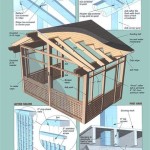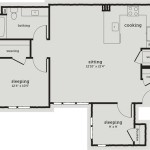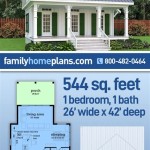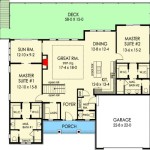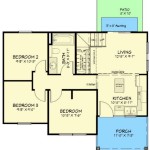Laundry In Master Closet Floor Plans: A Study in Convenience and Design
The integration of laundry facilities within a master closet floor plan represents a growing trend in modern home design. This configuration seeks to maximize convenience and efficiency by consolidating related tasks within a single, easily accessible space. The decision to incorporate a laundry area into a master closet involves careful consideration of space, ventilation, noise management, and overall aesthetic integration within the existing or planned design.
This article will explore the key considerations and design principles involved in successfully implementing a laundry area within a master closet. It will delve into the advantages and disadvantages of this design choice, examine various layout options, and provide guidance on selecting appropriate appliances and materials to ensure both functionality and aesthetic harmony.
Key Point 1: Advantages and Considerations of In-Closet Laundry
The primary advantage of integrating laundry facilities within a master closet is convenience. This proximity minimizes the transport of laundry between the bedroom, bathroom, and laundry room, saving time and effort. Clothing can be directly transferred from the closet to the washing machine and dryer, streamlining the laundry process. Furthermore, freshly laundered clothes can be immediately hung or folded upon removal from the dryer, reducing the likelihood of wrinkles and maintaining garment organization.
However, this design choice necessitates careful consideration of several factors. Space limitations are often the most significant constraint. Master closets vary in size, and incorporating laundry appliances can significantly reduce available storage. A detailed assessment of storage needs and the dimensions of potential appliances is crucial before committing to this design. Vertical space can be optimized with stacked washer and dryer units, but this may require modifications to electrical and plumbing connections.
Ventilation is another critical consideration. Clothes dryers generate heat and moisture, which can contribute to mold and mildew growth within a confined closet space. Proper ventilation is essential to mitigate this risk. An exhaust fan ducted to the exterior of the house is highly recommended. Additionally, choosing a ventless dryer can eliminate the need for external venting, although these models often have a higher initial cost and may have longer drying times.
Noise management is also important. Washing machines and dryers can produce significant noise during operation, which can disrupt sleep or other activities within the master bedroom. Selecting quiet appliances and implementing soundproofing measures can help minimize noise pollution. Placing appliances on vibration-dampening pads and using solid-core doors to enclose the laundry area can further reduce noise transmission.
Finally, the aesthetic integration of laundry appliances within the master closet is crucial. Appliances should be chosen to complement the overall design aesthetic of the closet and bedroom. Concealing appliances behind cabinet doors or incorporating them into a built-in storage system can create a more seamless and visually appealing look. Careful attention to detail in terms of finishes, hardware, and lighting can further enhance the aesthetic integration.
Key Point 2: Layout Options and Design Principles
Several layout options can be considered when integrating laundry facilities into a master closet. The choice of layout will depend on the size and configuration of the closet, the available space, and the desired level of integration with the existing storage system.
One common layout option is to dedicate a portion of the closet to a laundry alcove. This involves creating a separate area within the closet specifically for the washer and dryer. This alcove can be enclosed with doors or left open, depending on the desired level of visual separation. Shelving can be added above the appliances to provide storage for laundry supplies, such as detergent, fabric softener, and dryer sheets.
Another option is to integrate the laundry appliances into a built-in storage system. This involves incorporating the washer and dryer into a custom-designed cabinet system that matches the existing closet storage. This approach can create a very seamless and visually appealing look, as the appliances are hidden behind cabinet doors. However, it requires careful planning and precise measurements to ensure that the appliances fit properly within the cabinet system.
A third option is to utilize a stacked washer and dryer unit. This configuration is particularly well-suited for smaller closets, as it maximizes vertical space and minimizes the footprint of the appliances. Stacked units typically require specialized plumbing and electrical connections, so it's important to consult with a qualified contractor before installing them.
Regardless of the layout chosen, several design principles should be followed to ensure a functional and aesthetically pleasing space. Proper lighting is essential to illuminate the laundry area and make it easier to work. Task lighting, such as under-cabinet lights, can be added to provide focused illumination for folding and sorting laundry. Adequate ventilation is crucial to prevent moisture buildup and mold growth. An exhaust fan ducted to the exterior of the house is highly recommended. Sufficient electrical outlets should be provided to power the washer, dryer, and any other appliances or accessories used in the laundry area. Plumbing connections for the washer should be easily accessible for maintenance and repairs.
The placement of the laundry appliances should be carefully considered to minimize noise and vibration. Appliances should be placed on a level surface and secured to prevent movement during operation. Vibration-dampening pads can be used to further reduce noise transmission. The layout should also provide adequate space for maneuvering around the appliances and for folding and sorting laundry. A folding counter or table should be incorporated into the design to provide a convenient surface for these tasks. Finally, the overall design should be consistent with the style and aesthetic of the master bedroom and closet. This includes selecting finishes, hardware, and lighting that complement the existing decor.
Key Point 3: Appliance and Material Selection
The selection of appropriate appliances and materials is critical to the success of a laundry-in-master-closet project. The size and type of appliances should be carefully considered based on the available space, laundry needs, and budget. Front-load washers and dryers are generally preferred for in-closet installations, as they typically have a smaller footprint and can be stacked to save space. Ventless dryers are also a good option, as they eliminate the need for external venting. However, these models often have a higher initial cost and may have longer drying times. Choosing Energy Star-rated appliances can help reduce energy consumption and lower utility bills. It is vital to select appliances known for their quiet operation to minimize disruption within the master suite.
The materials used in the laundry area should be durable, moisture-resistant, and easy to clean. Tile flooring is a good option, as it is resistant to water damage and can be easily cleaned. Solid surface countertops, such as quartz or granite, are also a good choice, as they are non-porous and resistant to stains. Cabinetry should be made from moisture-resistant materials, such as marine-grade plywood or MDF. Laminate or thermofoil finishes are also a good option, as they are durable and easy to clean.
In addition to the basic appliances and materials, several other accessories can enhance the functionality and convenience of the laundry area. A pull-out ironing board can be a valuable addition, as it provides a convenient surface for ironing clothes. A drying rack can be used to dry delicate items that should not be placed in the dryer. A storage bin or hamper can be used to collect dirty laundry. A small trash can can be used to dispose of lint and other debris.
The selection of lighting fixtures is also important. Task lighting, such as under-cabinet lights, can be added to provide focused illumination for folding and sorting laundry. Recessed lighting can be used to provide general illumination for the laundry area. Decorative lighting fixtures, such as pendant lights or sconces, can be used to add a touch of style to the space.
The overall goal of appliance and material selection is to create a laundry area that is both functional and aesthetically pleasing. By carefully considering the available space, laundry needs, and budget, it is possible to design a laundry area that seamlessly integrates into the master closet and enhances the overall convenience and functionality of the home. Additionally, consult with professionals, such as interior designers and contractors, to ensure compliance with building codes and safety regulations.

Master Closet Utility Room Connection

The Connected Laundry Housing Design Matters

House Plans With Laundry Room Master Home Design Ideas

4 Bed House Plan With Master Walk In Closet Laundry Access 70553mk Architectural Designs Plans

Exclusive Farmhouse Plan With Laundry In Master 130013lls Architectural Designs House Plans

Upstairs Floor Plan Master Bath Laundry Closet

Pin Page

Second Floor Laundry Room Closet Renovation Nina Hendrick

European Style House Plan With Master Suite Laundry Access 70551mk Architectural Designs Plans

About The Addition Master Bedroom Laundry Room And Family Addicted 2 Decorating

